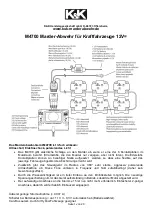
UMTS/HSDPA Module
UC15 Hardware Design
UC15_Hardware_Design Confidential / Released 35 / 72
3.10. AUDIO Interface
The module provides two analogy input channels and two analogy output channels.
Table 12: Pin Definition of the AUDIO Interface
Pin Name
Pin No.
I/O
Description
Comment
MIC1P 23
AI
Positive voice-band input.
If it is unused, keep open.
MIC1N 24
AI
Negative voice-band input.
If it is unused, keep open.
MIC2P 25
AI
Auxiliary positive voice-band
input.
If it is unused, keep open.
MIC2N 26
AI
Auxiliary negative voice-band
input.
If it is unused, keep open.
SPK1P 22
AI
Positive voice-band output.
If it is unused, keep open.
SPK1N 21 AO
Negative voice-band output.
If it is unused, keep open.
SPK2P 20
AO
Auxiliary positive voice-band
output.
If it is unused, keep open.
AGND 19
AO
Analog ground. Separate ground
connection for external audio
circuits.
Suggested to be used for audio
circuit.
z
MIC1 and MIC2, which may be used for both microphone and line inputs. An electret microphone is
usually used. MIC1 and MIC2 are both differential input channels.
z
SPK1 and SPK2, which may be used for both receiver and speaker outputs.SPK1 channel is typically
used for a receiver, while SPK2 channel is typically used for headset or speaker. SPK1 channel is a
differential channel and SPK2 is a single-ended channel. SPK2P and AGND can establish a pseudo
differential mode. Both SPK1 and SPK2 support voice and ringtone output, and so on.
z
These two audio channels can be swapped by “AT+QAUDCH” command. For more details, please
refer to
document [1].
Use AT command “AT+QAUDCH” to select audio channel:
0--MIC1/SPK1 (normal audio channel), the default value is 0
.
1--MIC2/SPK2 (auxiliary audio channel)
.
For each channel, customer can use AT+QMIC to adjust the input gain level of microphone. Customer
can also use “AT+CLVL” to adjust the output gain level of receiver and speaker. “AT+QSIDET” is to set the
side-tone gain level. For more details, please refer to
document [1]
.
















































